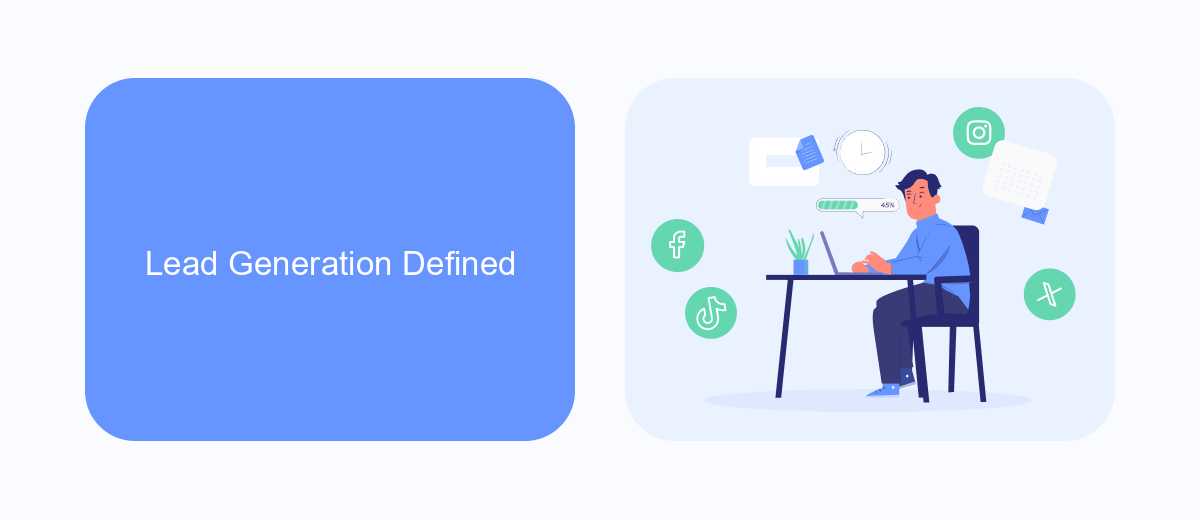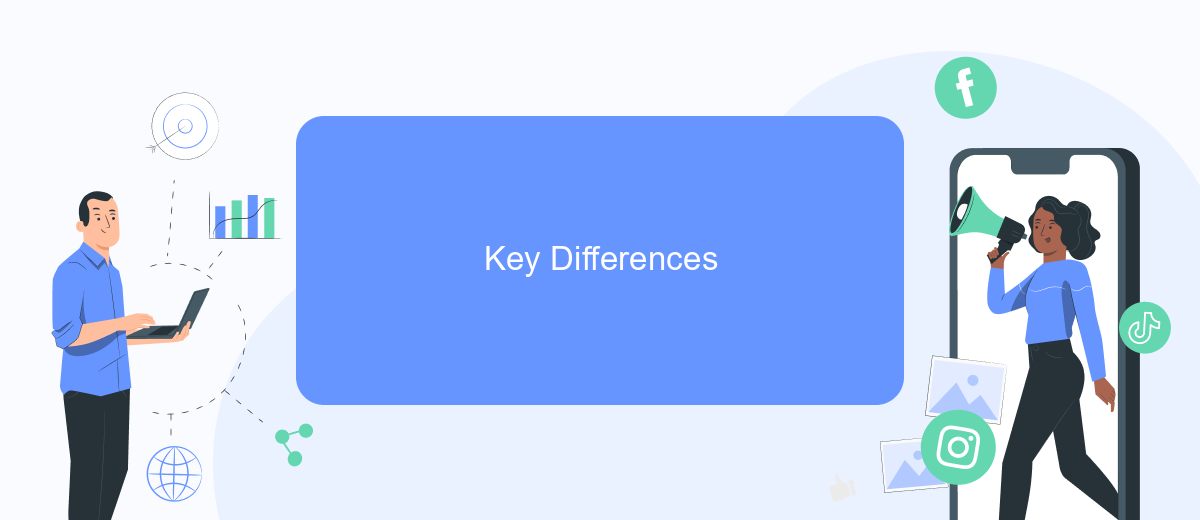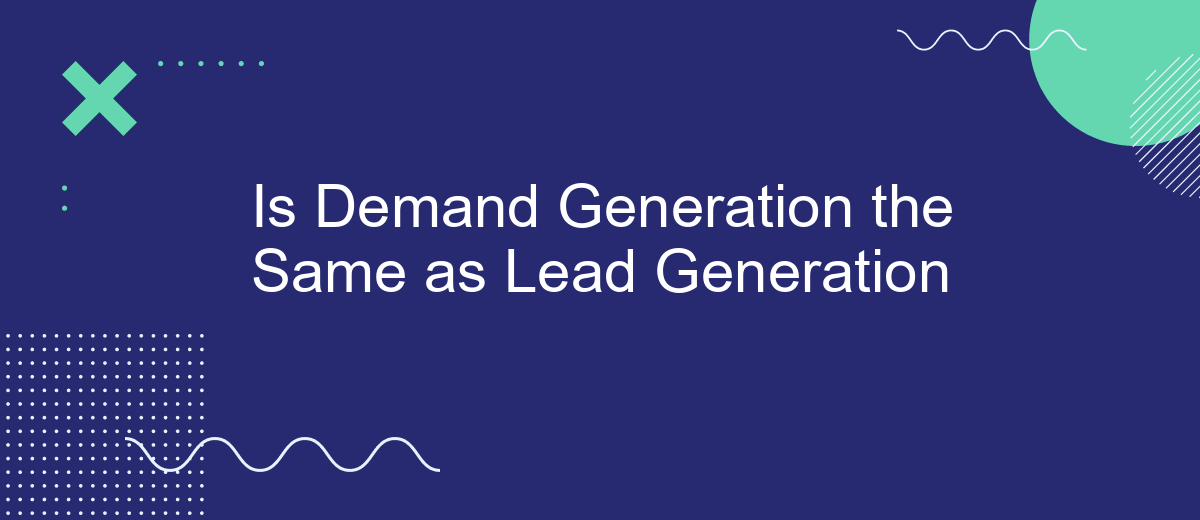In the dynamic world of marketing, the terms "demand generation" and "lead generation" are often used interchangeably, yet they represent distinct strategies. Understanding the difference between these two concepts is crucial for businesses aiming to optimize their marketing efforts and drive growth. This article explores the nuances and unique roles of demand generation and lead generation in a successful marketing strategy.
Demand Generation Defined
Demand generation is a holistic approach to creating awareness and interest in a company's products or services. It goes beyond simply capturing leads; it aims to nurture and engage potential customers throughout their buying journey, ensuring they are well-informed and ready to make a purchase decision.
- Building brand awareness through content marketing and social media.
- Engaging potential customers with targeted campaigns and personalized messaging.
- Nurturing leads with educational content and continuous engagement.
- Tracking and analyzing customer behavior to refine marketing strategies.
Effective demand generation often involves integrating various marketing tools and platforms to streamline processes and enhance results. Services like SaveMyLeads can be instrumental in automating lead data collection and integration, ensuring that marketing efforts are cohesive and data-driven. By leveraging such tools, businesses can efficiently manage their demand generation strategies, leading to higher conversion rates and sustained growth.
Lead Generation Defined

Lead generation is the process of attracting and converting strangers and prospects into someone who has indicated interest in your company's product or service. This can be achieved through various marketing strategies, such as content marketing, social media campaigns, and email marketing. The primary goal is to capture potential customers' contact information, typically through forms or landing pages, to nurture them into becoming loyal clients.
Effective lead generation often involves the use of automation tools and integrations to streamline the process. For instance, services like SaveMyLeads can automatically transfer lead data from various sources directly into your CRM system, ensuring that no potential customer is overlooked. By leveraging such tools, businesses can enhance their lead management efficiency, allowing sales teams to focus on converting these leads into actual sales. This not only saves time but also improves the overall effectiveness of marketing efforts.
Key Differences

While both demand generation and lead generation are essential components of a successful marketing strategy, they serve distinct purposes and operate at different stages of the customer journey. Understanding these differences can help businesses allocate resources more effectively and optimize their marketing efforts.
- Objective: Demand generation focuses on creating awareness and interest in your brand or product, while lead generation aims to capture contact information and convert interested prospects into leads.
- Approach: Demand generation employs a broad range of tactics like content marketing, social media campaigns, and webinars to attract a wide audience. Lead generation, on the other hand, uses targeted strategies such as landing pages, forms, and gated content to collect user data.
- Metrics: Success in demand generation is measured by metrics like website traffic, social media engagement, and brand awareness. Lead generation success is gauged by the number of leads captured, conversion rates, and the quality of the leads.
To streamline the lead generation process, businesses can utilize integration services like SaveMyLeads, which automate the transfer of lead data between various platforms, ensuring a seamless and efficient workflow. By leveraging such tools, companies can enhance their lead management and focus more on nurturing and converting leads into customers.
How They Work Together

Demand generation and lead generation are two essential components of a successful marketing strategy. While demand generation focuses on creating awareness and interest in your products or services, lead generation aims to capture those interested prospects and convert them into leads. Together, they form a cohesive approach to attracting and nurturing potential customers.
When integrated effectively, demand generation and lead generation can significantly enhance your marketing efforts. Demand generation activities, such as content marketing, social media campaigns, and webinars, help build brand awareness and educate your target audience. Lead generation tactics, like landing pages, forms, and email marketing, then capture the interest generated and turn it into actionable leads.
- Demand generation creates initial interest and awareness.
- Lead generation captures and nurtures interested prospects.
- Integration tools like SaveMyLeads streamline the process.
- Combined efforts lead to higher conversion rates and sales.
By leveraging tools like SaveMyLeads, businesses can automate the integration between demand generation and lead generation activities, ensuring a seamless flow of data and enhancing overall efficiency. This holistic approach maximizes the impact of your marketing efforts, driving growth and achieving better results.
- Automate the work with leads from the Facebook advertising account
- Empower with integrations and instant transfer of leads
- Don't spend money on developers or integrators
- Save time by automating routine tasks
Conclusion
In conclusion, while demand generation and lead generation are closely related, they serve distinct purposes within a marketing strategy. Demand generation focuses on creating awareness and interest in a product or service, ultimately building a pipeline of potential customers. On the other hand, lead generation is more targeted, aiming to capture specific information from potential customers to convert them into qualified leads. Both strategies are essential for a comprehensive marketing approach, and their successful implementation can significantly enhance a company's growth and revenue.
Integrating tools and services can streamline these processes, making them more efficient and effective. For instance, SaveMyLeads offers seamless integration solutions that can automate data transfer between various platforms, ensuring that your demand and lead generation efforts are synchronized and optimized. By leveraging such tools, businesses can save time, reduce manual errors, and focus more on strategic activities that drive growth. Ultimately, understanding and effectively utilizing both demand and lead generation can provide a competitive edge in today's dynamic market landscape.
FAQ
What is the difference between demand generation and lead generation?
Why is demand generation important for businesses?
Can demand generation and lead generation strategies be integrated?
How can automation tools assist in demand and lead generation?
What metrics should be tracked for demand generation versus lead generation?
Personalized responses to new clients from Facebook/Instagram. Receiving data on new orders in real time. Prompt delivery of information to all employees who are involved in lead processing. All this can be done automatically. With the SaveMyLeads service, you will be able to easily create integrations for Facebook Lead Ads and implement automation. Set up the integration once and let it do the chores every day.

